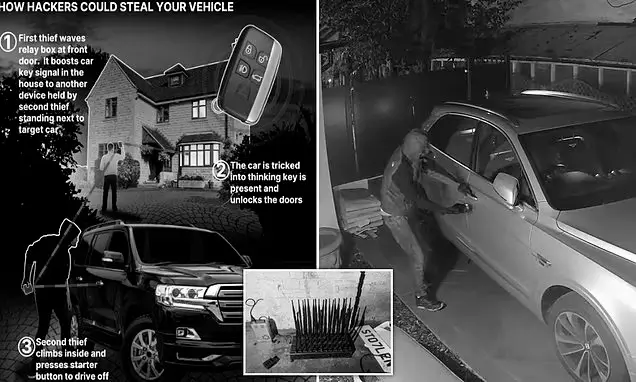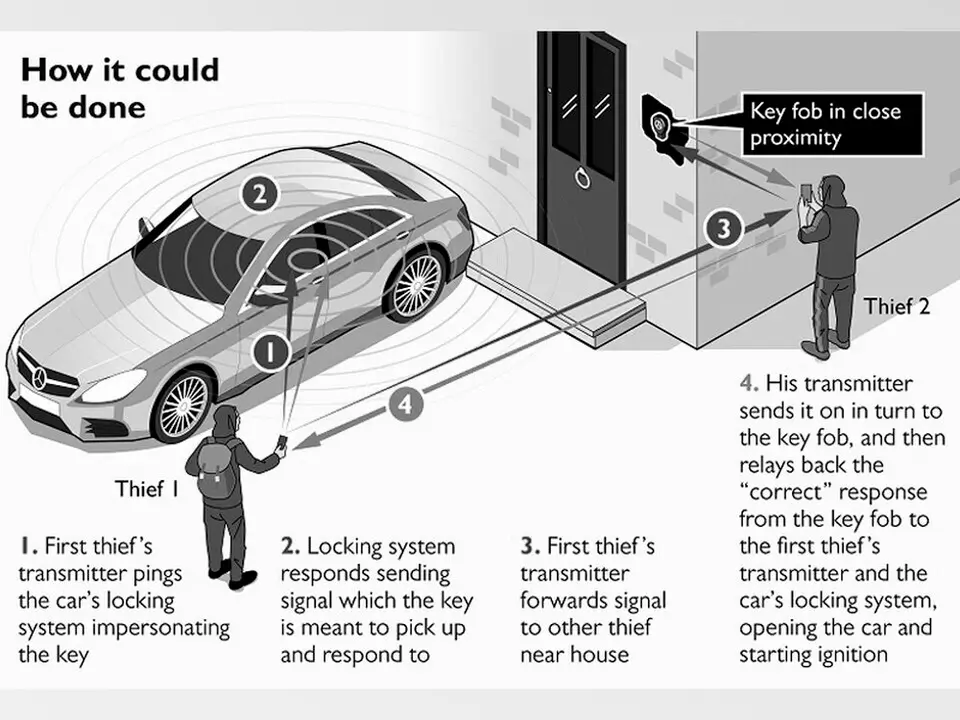Technology-Enabled Crime: The £1.3 Million Keyless Car Theft Operation
Case Overview
Two men have been sentenced to prison for orchestrating a sophisticated keyless car theft scheme worth £1.3 million, highlighting the evolving nature of vehicle theft in the digital age. Jack Reid, 22, and Connor Jones, 25, were jailed this week at Chelmsford Crown Court after pleading guilty to burglary and conspiracy to steal motor vehicles across several English counties.
Technology Behind the Crimes
According to Essex Police, the operation methodically employed cutting-edge technology that exploited vulnerabilities in modern cars' keyless entry systems. The thieves:
Romano's nostalgic analysis extended beyond personnel to operations. While current Mafia members were content selling "small bars of hashish," he recalled predecessors who organized massive shipments—actions that ultimately resulted in life sentences for numerous old-guard bosses. He advised aspiring mafiosi to:
- Placed signal-capturing devices near victims' homes
- Captured and replicated radio frequency signals emitted by car key fobs
- Executed what security experts call a "relay attack"
- Fooled vehicles into recognizing the replicated signal as coming from the authorized key
This method allowed the criminals to unlock and start targeted vehicles without physical keys or causing visible damage, leaving confused owners with little explanation for how their vehicles disappeared without signs of forced entry.

Multi-County Criminal Enterprise
What began as sporadic incidents eventually revealed itself as a five-county organized criminal operation. Essex Police launched a comprehensive investigation after identifying patterns connecting approximately 70 car thefts to the same criminal organization. The operation spanned a vast area of East England, including:
- Essex
- Norfolk
- Cambridgeshire
- Hertfordshire
- London
This geographic dispersal demonstrated the mobility and ambition of the criminal enterprise while helping them avoid detection by crossing jurisdictional boundaries, preventing any single police force from seeing the complete pattern of offenses.
Operational Timeline and Escalation
The case took a significant turn when Katie Evans of Brentwood became a victim in July 2024. Her Ford Kuga was taken directly from her driveway without any physical evidence left behind. Reid and Jones used Evans' vehicle as a getaway car for subsequent thefts, transforming it from its intrinsic value into what investigators ultimately determined to be a calculated act.
"I felt scared at the thought of someone being outside my home watching until my children and I went to sleep to take our family car," Evans said, describing the psychological impact of the crime. "At every little noise I heard I thought someone was coming back to break into the house."
Using Evans' Ford Kuga, the pair carried out an additional 38 vehicle thefts throughout the region, significantly accelerating their illegal activity and increasing their operational tempo. This phase marked a clear escalation in the frequency and boldness of their activities.
Police Investigation and Tactical Shifts
Investigators discovered the abandoned Ford Kuga in Waltham Abbey in August, coinciding with a distinct two-week pause in vehicle thefts across the region. This operational pause provided additional evidence linking the specific vehicle to the broader theft pattern.
Criminal activity resumed in mid-August but with a tactical change. Reid and Jones had replaced the Ford Kuga with a Volkswagen Golf stolen from Edmonton in north London. Using their new vehicle, they continued their theft campaign across Essex, focusing particularly on:
- Brentwood
- Epping
- Basildon
This adaptive behavior revealed the offenders' awareness of police tactics and their ability to modify their approaches to avoid detection—characteristics of a more sophisticated criminal operation than opportunistic theft.

The Processing Operation
Establishing a processing center for stolen vehicles was crucial to the criminal operation. Police investigations revealed that many of the stolen vehicles were driven to a lock-up garage in Waltham Abbey. This facility functioned as a "chop shop," systematically dismantling cars for parts.
This aspect of the operation highlights the connection between the theft ring and the broader black market for automotive components. Rather than attempting to resell stolen vehicles whole—which involves greater risks of detection through vehicle identification numbers (VINs) or license plate recognition systems—the operation focused on harvesting valuable components that could be sold individually with far less traceability.
The parts market offers a lucrative segment of automotive crime, with certain components—particularly electronic modules, airbags, and catalytic converters—especially valued due to supply chain issues in authorized repair channels.
Arrests and Compilation of Evidence
The investigation culminated on October 7th when armed police apprehended Reid and Jones at their Waltham Abbey lock-up. The timing of the arrest indicates a well-planned operation that allowed police to catch the suspects in the act, thereby strengthening the evidential case for prosecution.
The scene provided detectives with abundant incriminating evidence, including:
- Tools specifically designed for vehicle theft
- Multiple stolen vehicles in various stages of dismantling
- Cloned number plates used to disguise stolen cars
- Multiple keys
- Balaclavas to conceal identities during thefts
- Signal transmitters used to record and replicate keyless entry signals
The comprehensive nature of the evidence collected revealed the scope and sophistication of the operation, leaving little room for legal defense and supporting the suspects' decision to plead guilty rather than contest the charges.
Impact and Sentencing
Chelmsford Crown Court handed down substantial terms reflecting the planned and deliberate nature of the crimes, based on their guilty pleas:
- Jack Reid: Sentenced to three years and nine months
- Connor Jones: Sentenced to four years and eleven months
The differing sentences suggest variations in their roles within the operation or potentially distinct criminal backgrounds influencing the court's decision.
The Ongoing Battle Against Keyless Theft
This case represents just one operation in what is becoming an increasing trend in auto crime. Keyless entry systems continue to present challenges for law enforcement, insurance companies, and car manufacturers in terms of vulnerability.
Some car security experts recommend users of keyless entry systems store their key fobs in signal-blocking pouches or containers when not in use, preventing the type of signal interception employed by Reid, Jones, and similar criminal enterprises.
For victims like Katie Evans, the effects extend beyond the physical loss of a vehicle. Though less visible, the psychological consequences—including increased anxiety and vulnerability in one's own home—represent significant damages that persist long after insurance claims are settled.
This case serves as a reminder that criminal methods evolve with the times as automotive technology advances, calling for continuous updates to security systems and investigative techniques to protect consumers against increasingly sophisticated theft operations.